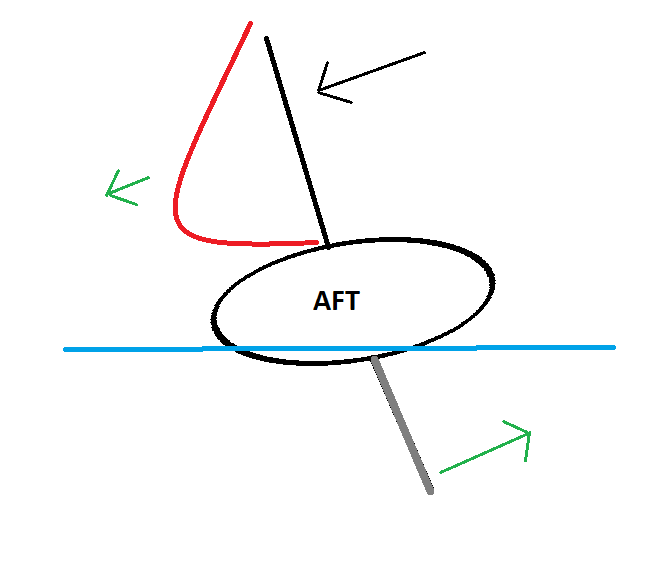The primary purpose of the keel is to keep your boat balanced while sailing. If your boat is well-balanced, it will have more speed through the water. It will also help prevent your boat from drifting to the side when the wind is blowing.
Keels carry the ballast, which is a large weight. They can weigh anywhere from 100 pounds to 5000 pounds and sometimes even more. They are an essential part of your boat and sailing without one would be nearly impossible.
Take a look at the diagram below. It shows the wind pushing on the sails and how the force of the keel keeps the boat steady and on course.

As you can see from the images above, the sails are being pushed out causing the keel to be forced in the opposite direction. This is where the heeling would start to happen. The wind is pushing the sails to the starboard side and gives them lift, while the keel is pushing in the opposite direction against the water. These two opposite direction forces, drive the boat forward because of its design.
The diagram below is of the same boat but with an aft view. This way you can see how the keel is pushed in the opposite direction causing the heel of the boat. The keel pushes against the water or current to create its balancing force. The force of the keel against the water and the wind force against the sail sends your boat forward.

A side note to mention when talking about the keel and the water is current. The current can have an effect of energy on the boat’s motion. A current against the boat will definitely affect its energy. The more the current the harder it will be to sail into it. Sailing with the current is less drag making it easier to maintain the boat’s momentum.
As I mentioned before, all of these different forces are what drive the boat forward. The amount of force from the wind and water is what will allow you to have different speeds across the water. I won’t go into a discussion of a bunch of different sailing directions but I will mention one with a lot of speed. The beam reach is going to have a lot of force giving you good heel and speed.
If you didn’t check out the article mentioned above, some of the information below is from that article and will help you learn a bit more about keels.
Do All Sailboats Have Keels?
All medium to larger sailboats will have a keel of some type. Smaller sailboats may not have a keel, such as a laser sailboat that uses human weight to control the heel of the boat. The type of keel will vary by the boat.
There are bunch of different types of keels. Each one has its benefits and looks a little different.
The Different Types of Keels
- Full Keel – Runs the full length of the boat
- Fin Keel – A common keel, attached to the center of the boat
- Winged Keel – Has a shallower draft for shallow waters
- Bulb Keel – Keeps the ballast at the lowest point possible
- Bilge Keel – A boat with two keels on the bottom, this allows for an upright position at low tide
- Swing Keel – A keel that can be raised and lowered. Common on smaller boats.
All of these keels have advantages and disadvantages when it comes to sailing. For most people, having a specific keel will not be a priority when purchasing a boat.
What Is The Purpose of a Keel?
The main purpose of the keel is to keep your boat balanced while sailing. If your boat is well balanced, it will have more speed through the water. It will also help prevent your boat from tipping over.
Keels carry the ballast, which is a large weight. They can weigh anywhere from 100 pounds to 5000 pounds and sometimes even more. They are an essential part of your boat and sailing without one would be nearly impossible.
Final Thoughts
When it comes to sailboats, keels are a huge part of the boat. Without them sailing would be very difficult. The keel is something that will not need too much attention over your sailing career other then cleaning it when you scrub the bottom of the boat. There are a lot of different keels out there and if your not racing, it doesn’t matter too much which one you have. Just remember shallow waters will be difficult without a swing keel. Cheers!
